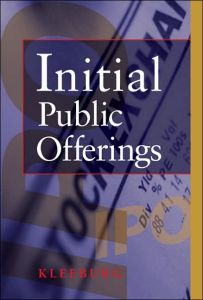Join getAbstract to access the summary!

Join getAbstract to access the summary!
Richard F. Kleeburg
Initial Public Offerings
Thomson South-Western, 2005
What's inside?
A step-by-step guide to the IPO process, an avenue to growth that has plenty of potholes along the way.
Recommendation
This short book, a miniature encyclopedia about the initial public offering (IPO), provides a survey of the field, perhaps best suited for those who are new to the subject. Even though some of his sentences are a bit tangled, getAbstract finds that author Richard P. Kleeburg provides a handy, iceberg-tips introduction to the complexities surrounding IPOs, including a rundown of their advantages and disadvantages, key players and business requirements. He includes a useful bibliography for those who want to take the next step into a deeper understanding of the field.
Summary
About the Author
Richard B. Kleeburg, C.M.A., M.B.A., J.D., Ph.D. is an internal auditor for a California mortgage. He is cited in the 2004-2005 Who’s Who in Finance and Business.
















Comment on this summary